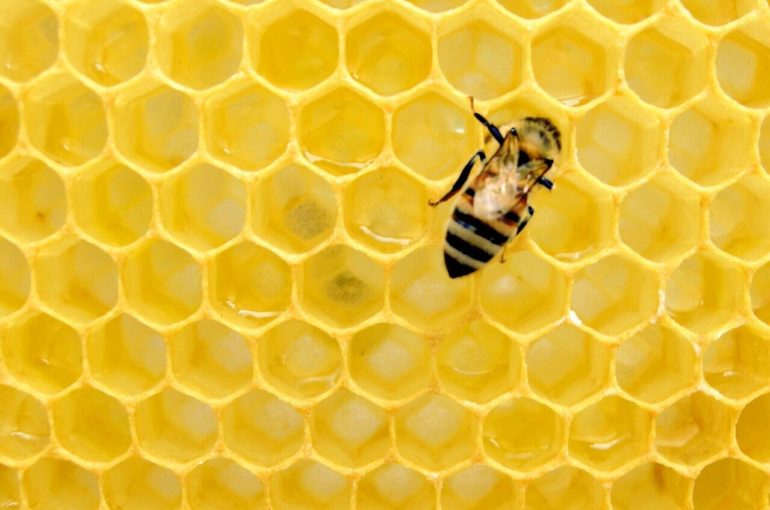Across California’s Central Valley, under stress from large-scale agriculture and climate change, native bee species that are flexible in their pollination behavior when around other wild bee populations appear best suited for survival in shrinking habitats.
That’s the primary finding of a study published online April 1 in the journal Nature Ecology & Evolution.
A research team led by University of Oregon biologist Lauren C. Ponisio identified 1,150 network interactions involving 157 wild bee species and 152 plant species at 63 sites spread across three counties. The findings emerged from observations of adult bees from 31 species whose pollination activities with at least five plants overlapped during multiple crop-growing seasons.
“We looked at the ability of these bees to change their roles in these plant-pollinator interaction networks,” Ponisio said. “This ability proved to be important for which species persisted in the landscape as well as for the higher number of habitat patches being occupied.”
An important behavior tied to that vitality was the ability of some wild bee species that chose plants being less targeted for pollination by competing species, said the study’s lead author, Marilia P. Gaiarsa, who was a postdoctoral researcher in Ponisio’s former lab at the University of California, Riverside.
Ponisio joined the UO’s Data Science Initiative in July 2020 as an assistant professor in the Department of Biology and member of the Institute of Ecology and Evolution. Gaiarsa now is a Marie Sklodowska-Curie Fellow at the University of Zurich, where she is studying the response of species interactions to climate change.
“In the Central Valley, there are areas of intensive industrial agriculture, monocultural farming, that are experiencing a 90 percent habitat loss for native bees,” Ponisio said.
Understanding what factors promote ecosystem health and ecosystem services, such as pollination, Gaiarsa said, is vital for helping species that are facing extinction from various extinction drivers such as intensive agriculture, deforestation and climate change.
“One way to turn around these negative effects is through the process of ecosystem restoration,” she said. “By going into a degraded area and planting native plants known to be important resources for bees, we can restore some of the lost interactions and potentially restore the populations of these species.”
The valley is a product of large land grants purchased for farming years ago. Large single-crop enterprises dominate the fertile land. Over time, hedgerows were added between some farms to restore patches of native plants that support native species, especially bees crucial to crop pollination. Bees, in turn, need nectar from the plants for nutrition.
Hedgerows observed in the study were created by planting flowers along the margins of fields more than a decade ago in a project led by study co-author Claire Kremen, Ponisio’s doctoral adviser at the University of California, Berkeley.
“At these hedgerows there are tiny patches of bee populations in these seas of monoculture agriculture,” Ponisio said. “Some colonize these patches; others go live in them for a while but eventually go extinct.”
By looking into the population dynamics of different species, the research team sought to understand if different species visited different habitat patches and, in turn, how well they were able to persist on the landscape. Occupation of different patches, Gaiarsa said, should increase the number of interactions at each site and potentially increase plant diversity and overall ecosystem health.
“If a particular bumblebee species pollinates several plants that are only pollinated by a couple of other bee species, maybe that bumblebee species will be able to colonize more habitat patches because there may be very little competition with other bees for its plant resources,” she said.
Study finds natural fires help native bees, improve food security
More information:
Marília Palumbo Gaiarsa et al, Pollinator interaction flexibility across scales affects patch colonization and occupancy, Nature Ecology & Evolution (2021). DOI: 10.1038/s41559-021-01434-y
Provided by
University of Oregon
Citation:
Adjusting interactions help some of California’s wild bee populations survive (2021, April 2)
retrieved 3 April 2021
from https://phys.org/news/2021-04-adjusting-interactions-california-wild-bee.html
This document is subject to copyright. Apart from any fair dealing for the purpose of private study or research, no
part may be reproduced without the written permission. The content is provided for information purposes only.



